Update from Dave: Welcome to one of the most popular posts on the blog. This post is kind of old and doesn't reflect my latest thinking, so let me point you toward some more recent things I've written in case you're curious:
- An Obituary for Close Reading
- Moving Forward with Close Reading
- Purposeful Annotation: A “Close Reading” Strategy that Makes Sense to My Students
And now for your regularly scheduled programming
So there's been lots of talk about close reading this year, even though it's far from new. And the hype makes sense; close reading is pretty much the heart of R.CCR.1, the very first of the reading anchor standards in the Common Core. With this in mind, my colleague Erica Beaton and I have written about it previously (Erica's post and mine), and we even presented on it at the Michigan Reading Association Conference in March.
As with most hyped stuff, there's a lot of misinformation out there about close reading, a lot of “beating texts with a hose” just for the sake of doing it, stuff that confuses kids and makes reading weird and unnatural.
And thus begins the third part in the series “A Non-Freaked Out, Focused Approach to the Common Core,” in which I share the key tenets I've been using this year in my 9th grade world history and comp/lit (ELA) classes.
But before we get into it, let me say this post has been hugely informed by my work with Erica Beaton, whose coattails I rode to MRA and who developed an awesome Prezi (that Prezi, by the way, is where the underlying structure of this article, and many of its images, come from). Also, the analogies in this post are Erica's (the toy-crane game, the breadcrumbs). Anyways, thank you, Erica, and readers, you should check out her blog and follow her on Twitter because she is cool.
So what is close reading?
If you came into our classes and asked our students what close reading is, what they'd probably describe is something that can be boiled down to this: the careful interpretation of a text wherein readers pay close attention to the way ideas unfold as they read. Often, this involves annotating texts for the sake of slowing ourselves down and recording our thinking so that we can do cool stuff with what you read.
It's not terribly sexy.
If it's not sexy, then why do it?
[That's an awkward question.]
We ask students to closely read because we ask them to read texts that are appropriately complex for their grade level, and that means that many of our students are going to struggle. When Erica and I started college, we began close reading intuitively, but we called it something like “write in the book so you don't fail.”
Kids understand that we don't close read everything; we don't close read recreational reading, for example. Close reading everything would kill a love for reading, and “book love” is something that we try to cultivate in our students through other aspects of our curriculum.
So going back to the fact that we naturally began close reading in college, let's look at why we started in the first place. These same reasons are why we give our students the opportunity to close read:
- close reading slows us down and allows us to interpret difficult passages;
- it keeps us focused on our purpose for reading (e.g., finding a claim to argue with);
- it leaves us “bread crumbs” with which we can find our way back to our thinking later on, like when we've got to write a paper or prepare for a discussion.
Essentially, close reading is a specific skill that we believe will help our kids practice understanding and using complex texts for diverse purposes. In other words, we provide students with repeated close reading opportunities so that they can flourish in the long-term, no matter what path they take.
Where does close reading come from?
For a great overview on the origins of close reading and why it's become such a big deal lately, I recommend Erica Beaton's blog (she's writing a thesis right now that dives heavily into this, and when she comes up for air, she'll eventually be sharing a boiled down version of her thoughts over at b10lovesbooks.wordpress.com).
In book format, I recommend Notice and Note as a good, current resource by masters Beers and Probst. They do a good job of overviewing the various theories and minds that have informed this movement since it began decades ago.
What, exactly, do we ask students to close read?
Below you'll find some images of the types of texts we ask students to closely read.
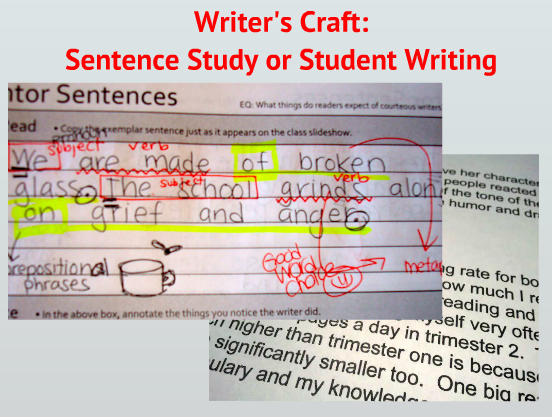
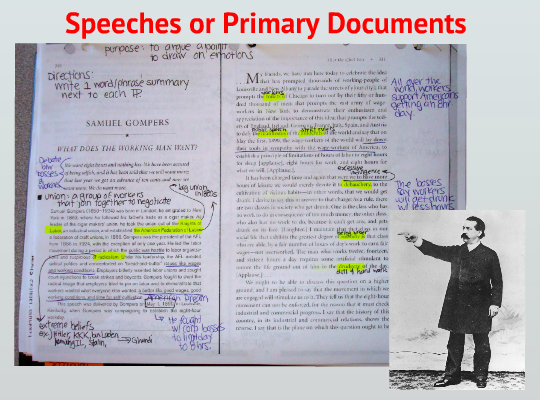
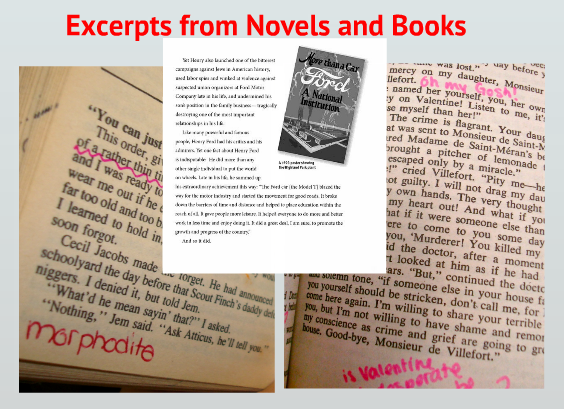
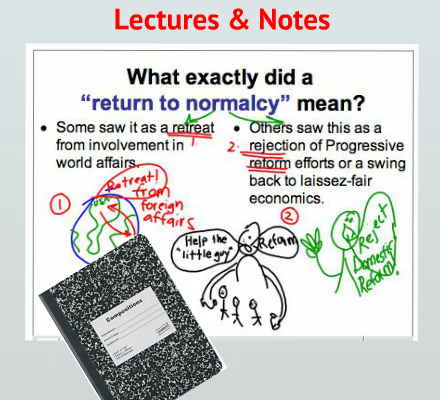
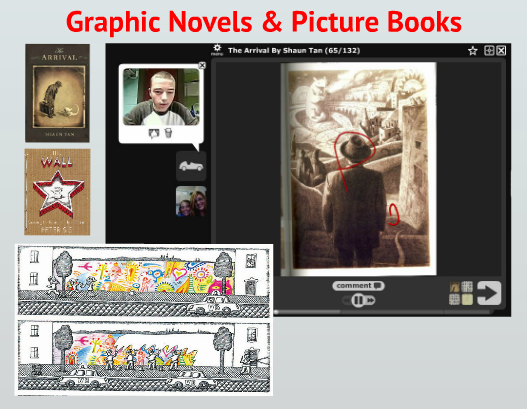

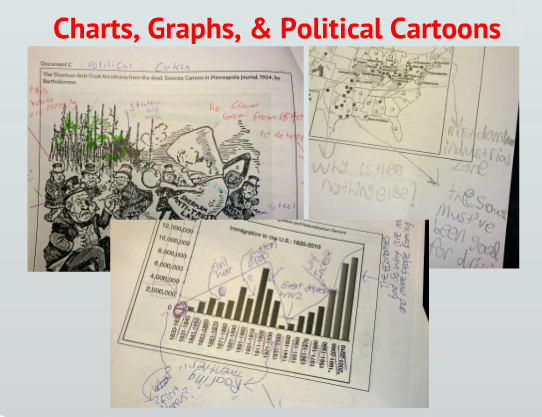
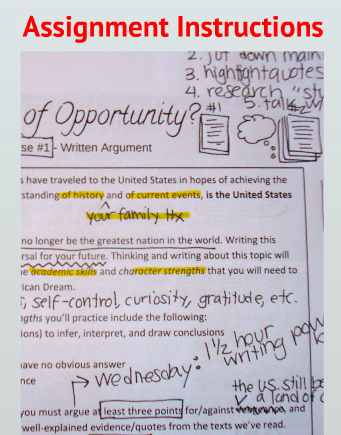
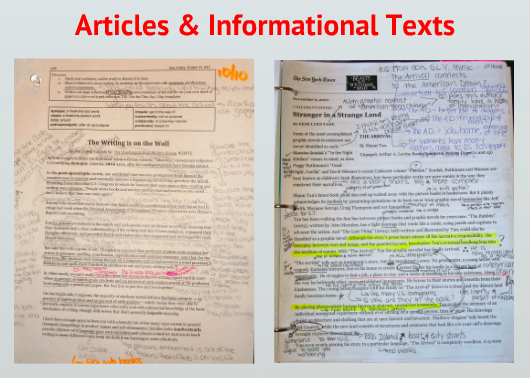
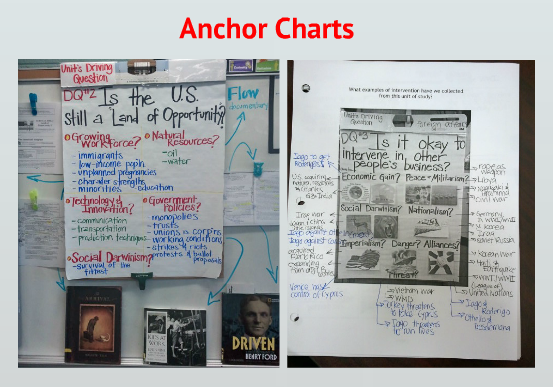
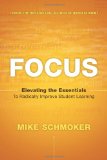 How is close reading done?
How is close reading done?
We again have to give credit to Mike Schmoker — his simple approach to literacy instruction centers around using close reading to inform discussion and writing. If you haven't read Focus, do so. Schmoker basically argues that simple, authentic literacy is the key to making schools more effective. He says that before we try anything else, we need to ensure that we've mastered some incredibly basic literacy moves.
For an average teacher like me, that's music — let me get good at the fundamentals by focusing on the fundamentals, and tell me that is a fine place to be!
The bounce pass illustration below is our take on the literacy model described in pages 74-89 of Schmoker's book. To us, this encapsulates close reading.
Introduce complex vocabulary: At most, we'll explicitly teach/introduce 10 vocabulary words in a given document. We usually choose these words based on how crucial they are to understanding the piece and/or how difficult or unfamiliar we think they'll be to our average students. Here are examples of articles of the week we've used, many of which include a glossary of complex vocabulary that we introduce prior to reading the article.For any given close reading, we'll use some or all of the moves below.
- Establish a purpose: This is where we try to hook our kids into the text. We might give background information, read an interesting section, or connect it to prior learning. We then seek to give students a clear, legitimate task or purpose. For this set of articles, I might ask them to propose solutions to the conflict in North Korea or explain why no clear solutions exist.
- Model higher-order reading/thinking: Here, we just read aloud a portion of the text, “showing” our thinking as we go through a paragraph or two. We try to show students how we stay focused on a reading purpose, how we appreciate craft, how we grapple with unfamiliar vocabulary, and how we annotate.
- Partner practice: After modeling, we set the students loose on a paragraph or two, but instead of having them read independently we may ask them to read aloud in pairs, annotating as they go. When finished, we have them share something they annotated. This forces them to stop and think while they are reading.
- Check for understanding: When our students are working in pairs or independently, we walk around, monitoring their work. Are they creating useful annotations? Are they slowing down enough to record their thinking in response to the text?
- Independent practice: Finally, the students are cut loose. Our goal is to give them at least two shots at this every week.
Aaaand bounce pass
Close reading in isolation makes no sense at all. After all, at no point when we naturally learned to close read did we simply do it “because.” We did it to help us pwn intellectual, text-based tasks like discussion and argument, both written and spoken.
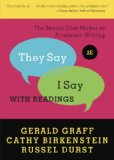
Close reading always ends with one of the following cool intellectual activities:
- Discussion: We will circle our students up, show them a template or two that we'd like to hear them try (They Say / I Say has these), and ask them to engage in an intellectual discussion about the text(s) at hand. Often, we require every student to participate.
- Debate: When we say, “We're debating about this article,” students act like we just announced a free day. Debate is da bomb, and that's pretty much what Part 4 of this series is
going to beabout. - Argumentative writing: The speaking tasks we do help inform and enliven the written work we want students to master. We always see students “get” argumentative writing when we're able to make connections with our frequent debates.
A video of some close reading in action
For us, there's nothing more insightful in terms of professional development than seeing a concept in action in the classroom. Below, I work with my students to pull argumentative evidence from a text that students have closely read. It's far from perfect, but, for what it's worth, enjoy.
Thanks for reading!
Thanks for joining us on this explanation of our approach to close reading. As always, we love your questions and comments — leave them below
In the next post, I'll be examining an approach to argument in the classroom. How do we create thriving argumentative cultures amongst our students in a variety of content areas? And how can argument be a major game-changer for students who have little connection to school? I don't have all the answers, but what I do have I'll endeavor to share. See you then

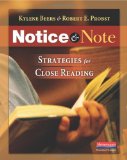
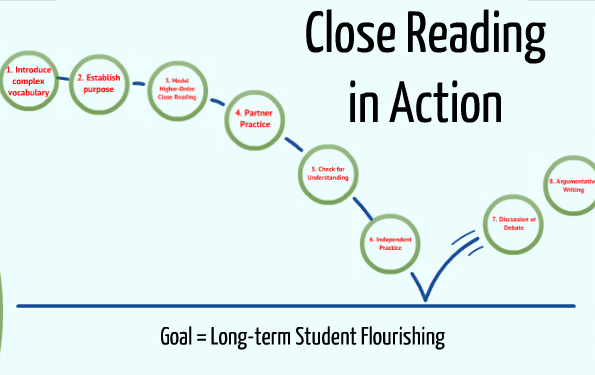
Rho says
Thank you is inadequate for appreciation for what you are doing with this blog. Lots of creative, down-to-earth, usable ideas to dig into and help everyone get better at what we do.
But
Thank You!
davestuartjr says
Rho, I appreciate that a lot. I think there’s a dearth in down-to-earth stuff created by real teachers who readily admit they don’t have it all figured out. I’m glad to hear that’s what you’re getting here at Teaching the Core.
Thank YOU, Rho!
Erica Beaton says
Thanks for pulling all of our thoughts together with such clarity, Stu! You killed it.
I’m really excited to be a part of this conversation on Close Reading. I can’t wait to hear how other teachers using it in their classrooms, especially across content areas and at the lower grade levels.
So with that, elementary and middle school teachers, what do you do to engage young students? ELA, Social Studies, Science, and Math teachers, how does your approach differ (or relate) based on your unique content areas?
Jill Comcowich says
Best blog on the Core. Period.
davestuartjr says
Best compliment. Ever.
Hillary says
I absolutely have to agree. After all the PD we’ve suffered through over the last two years, I have never walked away with such clear, useful ideas that I can (and will!) immediately implement in class. Bravo, Dave.
I finally dove into close reading last year, and while it was rigorous and a struggle (for both me and the kids!), the hard work paid off. After close reading MLK’s “I Have a Dream” speech, I had several kids come up to me and share how valuable they found the assignment to be. They loved watching King deliver the speech, and they felt moved by his tone and body language, but the close reading allowed them to also appreciate the genius of his argument, the beauty of his language, etc. I actually had one student tell me that, after close reading the speech, she “finally understood the purpose of figurative language.” You can’t ask for anything better than that!
davestuartjr says
Hillary, I’m pumped to hear that the PD was useful Your stories of what the kids said after MLK gave me goosebumps — keep up the work of letting kids work hard on great texts!
Your stories of what the kids said after MLK gave me goosebumps — keep up the work of letting kids work hard on great texts!
Kristeen Gard says
Very informative and helpful.
davestuartjr says
Thanks, Kristeen! Cheers
Emily Z. Mayer says
I read Schmoker’s Focus a few months ago, and it has honestly and truly renewed my desire for teaching. Instead of spending hours creating fancy (“sexy” in Dave-speak!) lessons attempting to integrate every new initiative in the world of teaching, I now practice using simple, easy techniques that allow my students to read, speak, and write. And it reassured me of the best news of all: anyone can do this Common Core stuff. It doesn’t take a Teacher of the Year to do great things in a classroom; it just takes someone willing to try a few basic moves. (A sense of self-depreciating humor helps, too. I remember the first close reading I did with my students…I’m pretty sure I saw blood oozing from my copy of the article I was teaching. I beat it THAT close to death.)
Thanks to your blog and great resources like Schmoker’s Focus, I now wake up every (ok…most) mornings glad to be a teacher, and excited about what is happening in my classroom. Thank you, thank you, thank you!
davestuartjr says
Emily, you really should go into the business of exploding people’s brains with encouraging comments because that’s what just happened to me. Thank you so much for taking the time to write this. It seems silly, but I feel the same way: being freed to focus has made me love my job while also being a more available husband and dad.
Seriously, Emily, your words are powerful. Thank YOU.
Maureen says
The title brought me here from Pinterest because I am so tired of hearing people wig out about CCSS. This is the most straight-forward discussion of close reading I have ever read, and I LOVE the examples of all the different types of texts! My freshmen students come to me having had previous experiences where they are required to have something written on every page of their novels, so if I even say the word “annotation” they shut down completely. I am stoked to use some of your language and explanations here to reframe the concept of close reading for them at the beginning of the year. Now, off to stalk the rest of this clearly amazing new resource…!!!
davestuartjr says
Maureen, you totally rock — thank you for your kind words, and even moreso for being someone who, deep in their gut, refuses to freak out about the Common Core. Throughout the past year of blogging and seeing this community grow, I’ve become convinced that there are enough teachers like you and I to start a movement that could make a serious bump in the low morale amongst teachers these days. I am excited for you and your students in the coming school year. Please let me know if there’s ever any other literacy topic you’d like me to cover
Nikki says
I must say that your blog is helping me get through this year. I am a new mom, EEKKK, I am trying to implement common core, and we just went 1 to 1 with iPads in August. It’s been a crazy year. It’s my 3rd year teaching, but I have felt like it is my first year all over again. I have spent the evening trying to figure out how I was going to teach my 8th graders how to close read tomorrow, and I think I finally have it figured out. I just need to put it all together. Thank you for what you do. I am sending a ton of your stuff to my principal in hopes that he might be able to pay for you to come present for us.
davestuartjr says
Nikki, thanks so much for taking the time to leave this comment — my hat is off to you for doing the superhero job of new mom AND the superhero job of teaching. And then the iPad thing… well, clearly you’ve got grit!
Please let me know how the close reading went, and, if at all possible, I would love to speak with your principal further to discuss making the trip a possibility. I’m a big fan of Missouri, and I’d love to work with you.
Keep in touch, Nikki!
Patti caputo says
Thanks for a great start. I am new to fifth grade(I previously taught the first grade self-contained class for approx. 10 years). I am learning common core and am just beginning to teach my fifth graders close reading. You made me feel like I am not alone! I just need to bring it down a notch or two for fifth grade. Thanks.
davestuartjr says
Hi Patti,
I’m glad it was helpful. To help with bringing it down a notch, I’d recommend checking out this article and this article.
Sharon Eskridge says
Thank you for such a clear definition of close reading. I have read so many other explanations and none have made me breath a sigh of relief like yours. I teach 6th,7th, and 8th grade reading and it has been a struggle this year teaching close reading. However, I don’t feel so freaked out now.
davestuartjr says
Sharon, thank you! It’s highest praise when I hear I helped someone breathe a sigh of relief — seriously, it makes the work here on the blog worth it! Thanks so much, Sharon — keep in touch!
Theresa says
I am giving workshops over the next two weeks on close reading, text structure and annotating for teachers K-12 and your article/pictures/explanations are referenced throughout my presentation with many kudos to your blog. Thank you! TS
davestuartjr says
Theresa, thank you for this shout out — it’s perfectly timed! I’ve had a rough week (just refer to the fact that it’s crazy time in schools–i.e., the weeks leading up to winter break), and this buoyed me!
Betsy Kelley says
I saw that someone asked the question of how to do close reading in a textbook that can’t be written in, or even a class set of novels. I can’t find the question or the answer to this. How do I do it? I teach 6th grade reading and social studies and would love to use this in both classes but to also use some cross curriculum stories and vocabulary between the two subjects.
Susan S. says
-short passages or a single page that you’ve photocopied for each student
-lay a piece of paper alongside the text for annotations
-use a graphic organizer like a t-chart or cluster web with a space for copying an appropriate passage, list of phrases, list of words, etc.
-even journal writing about the text functions as expression of “meaning-making” from the act of close reading
Susan S. says
Excellent, practical, purposeful…Thank you, Dave! And I wanted to bug you that my accelerated ELA classes will start studying Fahrenheit 451 next week. It’s a love story; there will be no wilted souls if I have anything to say about it.
davestuartjr says
Susan, this cracked me up — a love story! I will tell that to my students when we start reading it in a few weeks!
Heather Myers says
Thank you for this overview– I have been confused as to what the new buzz was. Haha! I was already doing much of this. However– one thing has become crystal clear to me— this is why I can’t Stand reading on a tablet. I like being able to physically annotate in my text (my close reading). There is something more concrete about physically writing my thinking- not typing it on a random page that I’ll never find again in the digital world. As we push for technology in education, how do we teach our kids to be effective readers using technology, applying these techniques? There is much to be said for paper copies and your own blood, sweat and tears doing the work.
davestuartjr says
Heather, you are so right — tables make annotating more complicated. However, it does seem like the Internet is getting better at this — for example, I’ve noticed on a few sites lately a functionality that allows readers to highlight a spot in the article and leave a comment — “annotate” — at that specific spot. That’s pretty cool, so I hope it spreads around.
Also, I’ve heard that on Newsela there is the ability to annotate digitally — the problem is that it’s a paid service, I think.
Until the Internet gets awesome at this, though, you’re right — paper and pencil rock.
Kathi says
Dave, In the world of where common sense seems to be lacking in education, thanks for bringing some to our new standards.
In the world of where common sense seems to be lacking in education, thanks for bringing some to our new standards.
You are my new best friend.
davestuartjr says
Kathi, I will take as many friends as I can get Be in touch if you ever have an idea for me to write about, okay? Thank you, in the meantime, for your kind words
Be in touch if you ever have an idea for me to write about, okay? Thank you, in the meantime, for your kind words 
Amy says
Thank you for this article. I actually have to do a demonstration using close reading for 8th grade later this week and am trying to decide what would be best to focus on with a 20 minute window to land a job.
davestuartjr says
Amy, that’s intense! I’d use Reading for Meaning statements or something equally simple. Something like have kids read a short article, after which they are going to discuss a certain focus question, and then you could model (through reading aloud) how kids can annotate purposefully toward that question they’ll be discussing.
One of those two: reading for meaning or purposeful annotation.
Amanda says
As a student teacher who is freaked out a large majority of the time, this was incredibly helpful!
davestuartjr says
Thank you, Amanda! Let me know if I can be of further service!
A Concerned Parent says
Shame on all of you for teaching this communistic education. There is a point where you as teachers need to stand up to these globalists with their ‘cradle to workforce’ agenda and say NO! Studying texts (all propaganda) instead of reading classic novels does not help a young child develop critical thinking. This is indoctrination and social engineering. Ask yourselves “What is really behind the Common Core” and do your own due diligence. You owe it to the future generations and read again Thoreau’s Duty to Civil Disobedience – man has a conscience and is no more than an animal if he/she does not exercise the conscience. Please wake up and do not go along with this destructive agenda. The CC will destroy our children’s minds and souls. I beg you all to do your research and do not comply.
davestuartjr says
Dear Concerned,
I sense that you are more than a bit concerned here. I don’t read anything in the standards that prickles against my conscience. I also don’t understand the threat to their souls. I beg you to elaborate on your bold claims; I also wish you the best. Cheers!